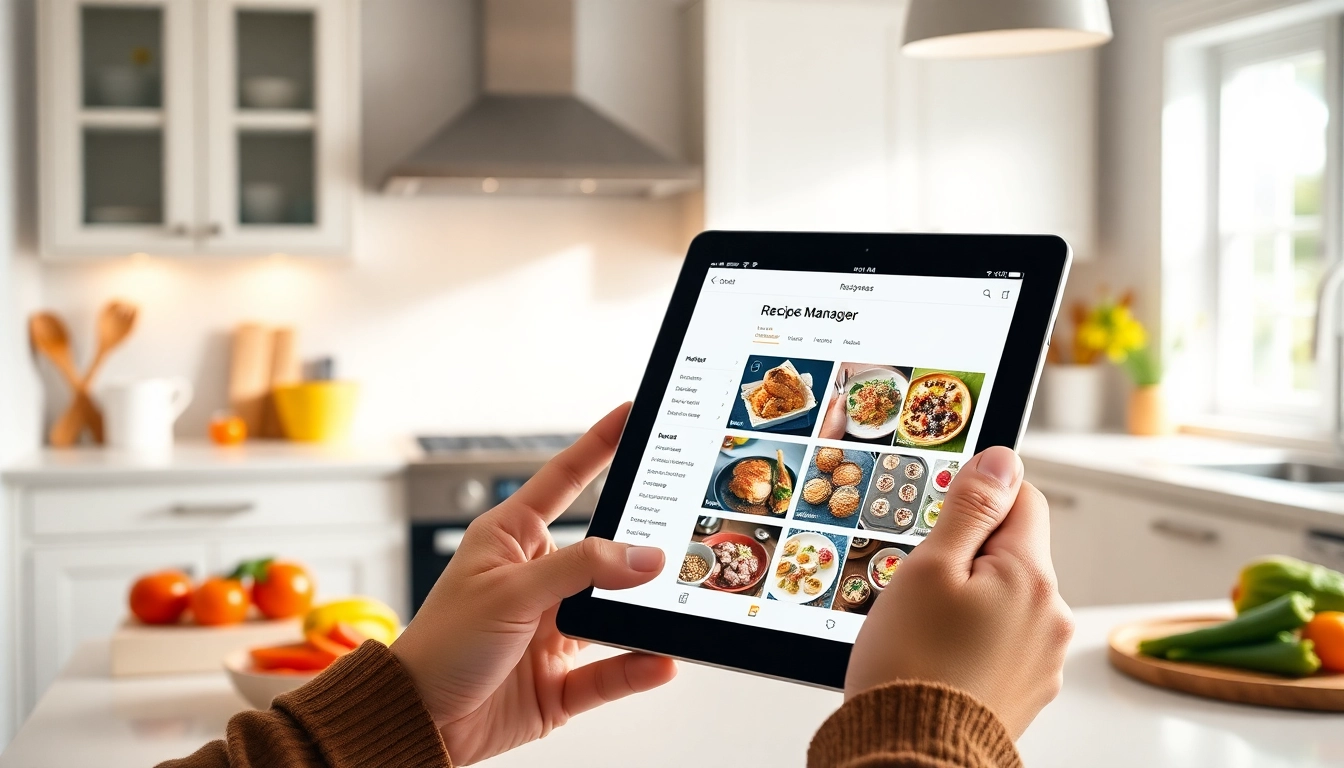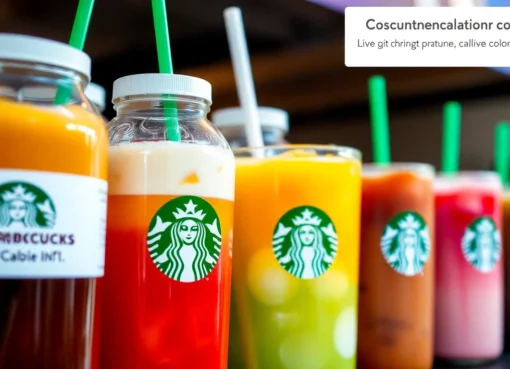Master Your Cooking with a Top-Rated Recipe Manager: Simplify and Organize Your Recipes

Understanding the Role of a Recipe Manager
What Is a Recipe Manager and How Does It Work?
A recipe manager is a sophisticated software tool designed to help home cooks, professional chefs, and culinary enthusiasts organize, store, and optimize their collection of recipes. Unlike traditional paper cookbooks or scattered digital files, a recipe manager offers a centralized digital space to store, search, and modify recipes with ease. Its core function is to streamline the cooking process, saving users valuable time and effort.
Modern recipe managers typically operate through intuitive interfaces that enable users to input recipes manually or import them automatically via web browsers or third-party integrations. These platforms utilize databases to catalog recipes efficiently, allowing quick retrieval through search functions, tags, or categories. Additionally, they often incorporate meal planning features, shopping list generation, and nutritional analysis, creating a comprehensive ecosystem around home and professional cooking workflows.
For example, some popular platforms like CookBook and Paprika emphasize multi-device synchronization, enabling chefs to access their recipes seamlessly on smartphones, tablets, and computers. This cross-platform compatibility is a game-changer for busy households and culinary pros who need to access their collection wherever they cook or shop.
Common Features to Look for in a Recipe Management Tool
When selecting a recipe manager, it’s essential to evaluate features that will support your culinary needs. The most valuable features include:
- Recipe Import and Export: Ability to import recipes from websites, PDFs, or images and export them in various formats for sharing or backup.
- Organizational Tools: Tags, categories, search filters, and folders to streamline access and categorization.
- Meal Planning Integration: Tools to plan weekly menus and align recipes with grocery shopping lists.
- Shopping List Generation: Automatic creation of shopping lists based on selected recipes or meal plans.
- Nutritional Information: Analysis features for added health insights and dietary management.
- Device Synchronization: Cloud-based sync ensuring recipes are accessible across multiple devices.
- User Interface & Ease of Use: Intuitive design that minimizes learning curve and maximizes efficiency.
- Offline Access: Ability to access recipes without an internet connection, critical for outdoor cooking or travel.
- Customization and Personalization: Ability to customize categories, display options, and meal plans to suit your cooking style.
Advanced features like dietary filters, chemical or allergen warnings, and community sharing also provide additional value, especially for users with specific health requirements or sharing networks.
Benefits of Using a Recipe Manager for Home Cooking
Integrating a recipe manager into your daily routine can revolutionize your kitchen experience. Benefits include:
- Enhanced Organization: No more lost recipes or overwhelming stacks of paper. Your entire collection is neatly categorized and easily searchable.
- Time Savings: Quick access to recipes, faster meal planning, and automatic shopping list creation streamline meal prep.
- Improved Accuracy and Consistency: Save standardized recipes and adjust ingredient quantities effortlessly to suit servings or dietary needs.
- Meal Planning Efficiency: Coordinate weekly menus, reduce food waste, and ensure balanced nutrition.
- Recipe Sharing and Collaboration: Share recipes with family or friends, and collaboratively build a shared digital cookbook.
- Digital Backup and Security: Prevent loss of recipes due to physical damage or device failure, with cloud backups and syncs.
- Inspiration and Creativity: Discover new recipes through integrated browsing features, tags, or community recipes, sparking culinary innovation.
Overall, a recipe manager makes cooking more accessible, organized, and enjoyable, turning a chaotic cookbook collection into a tailored culinary library.
Choosing the Best Recipe Manager for Your Needs
Comparing Popular Recipe Management Apps and Software
The market offers a wide array of recipe management tools, each catering to different user preferences. Leading options include:
- CookBook: Praised for its user-friendly interface, multi-platform support (iOS, Android, Web), and meal planning functionalities. It emphasizes adding recipes via web import and organizing them with tags and folders.
- Paprika: Known for its robust browser extension, recipe scaling, and meal planner features. Available on iOS, Mac, Android, and Windows, Paprika offers excellent synchronization but has limited free use (up to 50 recipes in the free version).
- RecipeSage: An open-source, donation-based tool focusing on personal recipe collection and meal planning with web, iOS, and Android support. Ideal for users seeking customizable, no-cost solutions.
- Mealie: A self-hosted option that runs locally on your server, perfect for privacy-conscious users who prefer full control over their data. It works well on mobile devices and supports offline access.
- Recipe Keeper: Offers quick and seamless recipe storing across multiple platforms, including PC, Mac, iOS, and Android, with features for sharing and exporting recipes.
Each app has unique strengths; your choice depends on your specific needs—whether it’s cross-device compatibility, offline access, open-source flexibility, or integration with meal planning components.
Key Factors to Consider: Compatibility, Price, and Features
To ensure the selected recipe management tool aligns with your routines, evaluate:
- Compatibility: Does it support your devices and operating systems? Consider apps that synchronize seamlessly across smartphones, tablets, and desktops.
- Price: Is there a subscription or one-time purchase fee? Determine whether free versions meet your needs or if premium features justify the cost.
- Features: Does it include meal planning, shopping list integration, importing/exporting, or nutritional info? Prioritize features that directly support your cooking and organizational goals.
- User Experience: Is the interface intuitive? Does it require technical expertise or time to learn?
How to Test and Select the Ideal Recipe Management Solution
Before committing, it’s advisable to:
- Identify your priorities—whether recipe storage, meal planning, or integration with other apps.
- Download trial versions or use free tiers to explore features.
- Test importing recipes and organizing them using folders or tags.
- Assess synchronization performance across devices.
- Review user feedback and expert reviews to identify common challenges and solutions.
- Consider privacy policies, especially if using cloud-based options or self-hosted solutions.
Implementing Your Recipe Manager Effectively
Organizing Your Recipes for Quick Access
Effective organization is the backbone of maximizing your recipe manager. Start by creating categories based on meal types (breakfast, lunch, dinner), cuisines, dietary needs, or occasion types. Use tags to denote key ingredients or prep time, enabling versatile filtering. For example, tagging recipes with “gluten-free,” “quick,” or “vegetarian” allows rapid retrieval tailored to your current preferences.
Maintaining a consistent naming convention and tagging system will help keep your collection manageable as it grows. Regularly review and archive outdated or less-used recipes to prevent clutter.
Some apps, like CookBook, allow nested folders or customizable views to optimize your workflow.
Importing and Adding Recipes Seamlessly
The value of a recipe manager is amplified when recipes from various sources can be added effortlessly. Many platforms offer built-in browser extensions or web clipper tools, enabling quick saving of recipes from cooking blogs, websites, or PDFs. For example, Paprika’s browser extension permits one-click saving directly from favorite cooking sites.
For imported recipes, ensure the platform supports bulk import via popular formats such as Markdown, CSV, or JSON. Manual entry remains an option for custom recipes; strive for clear, consistent formatting to facilitate future searches.
Additionally, some apps support OCR scanning of handwritten or printed recipes through mobile devices, transforming images into editable data, enhancing your digital collection’s completeness.
Integrating Meal Planning and Shopping Lists
Combining recipe management with meal planning streamlines weekly routines. When a recipe is added to a meal plan, the app can automatically generate a shopping list based on ingredients. This integration reduces food waste by purchasing only what is needed and minimizes last-minute grocery runs.
For example, tools like CookBook and Paprika allow users to drag recipes into a calendar view, visualize the week’s meals, and export consolidated shopping lists for easy shopping.
Some platforms support barcode scanning or voice input for quick ingredient entry, further simplifying the shopping preparation process.
Maximizing Efficiency and Inspiration
Utilizing Search, Tags, and Categories
The power of a recipe manager lies in its search capabilities. Using tags, keywords, and categories effectively can transform a large collection into a finely tuned digital cookbook. For instance, searching for “vegetarian” recipes with “30 minutes” prep time allows you to find quick, meat-free meals effortlessly.
Advanced search filters, including dietary restrictions or ingredient exclusions, further refine results. Regularly updating tags and categorization ensures your workflow remains smooth and intuitive.
Sharing Recipes with Family and Friends
Sharing is a core aspect of culinary enjoyment. Many apps support recipe sharing via email, social media, or direct links within the platform. Some, like Recipe Keeper, enable creating shared cookbooks for household members, fostering collaborative cooking.
Maintaining version control and annotations helps ensure that modifications, such as ingredient substitutions, are preserved in shared recipes. This promotes consistency and culinary growth within your community.
Keeping Your Recipe Collection Up-to-Date
Regular review and updating your digital recipe library keep it relevant and effective. As you discover new recipes or modify existing ones, hash out improvements directly within your app. Utilizing features like recipe ratings or notes can help prioritize favorites and flag recipes for refinement.
Backup strategies, whether cloud-sync or local exports, prevent data loss and ensure your culinary library is protected as it grows.
Measuring Success and Improving Your Cooking Routine
Tracking Recipe Usage and Favorites
Many platforms incorporate analytics or usage tracking. Marking recipes as favorites or frequently accessed allows you to identify go-to dishes, helping streamline weekly meal planning and shopping.
Over time, such data can inform menu rotation, highlighting recipes that resonate with your tastes or dietary goals.
Adjusting Recipes for Dietary Needs and Preferences
Recipe managers simplify scaling ingredients and adjusting for allergies or dietary restrictions. For example, increasing servings or swapping ingredients can be done with minimal effort, maintaining recipe integrity. Some apps enable substitutive suggestions or automatic recalculations of nutritional info.
Incorporate user comments or modification notes to create personalized versions, promoting culinary experimentation and adaptability.
Using Feedback to Enhance Your Collection Over Time
Feedback loops, including noting which recipes turned out well or needed adjustments, support ongoing collection refinement. Implementing rating systems, notes, or photo documentation helps embed learning, ensuring your recipes evolve with your preferences and cooking skills.
Community forums or social platforms may also offer inspiration and constructive critique, enriching your culinary repertoire.
